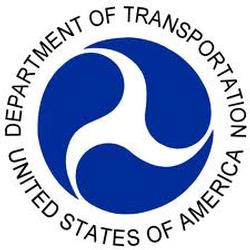
BTS releases February 2015 North American freight numbers
U.S.-NAFTA freight totaled $85.7 billion in February 2015 as two out of five transportation modes – air and truck – carried more U.S.-NAFTA freight than in February 2014, according to the TransBorder Freight Data released today by theU.S. Department of Transportation’s Bureau of Transportation Statistics (BTS). The $85.7 billion total is the lowest February value for U.S.-NAFTA freight since 2011. Year-over-year, the value of U.S.-NAFTA freight flows by all modes decreased by 4.3 percent. The value of NAFTA trade by pipeline and vessel declined in February due to the reduced unit price of mineral fuel shipments.
Freight by Mode
In February 2015 compared to February 2014, the value of commodities moving by air grew by the largest percentage of any mode, 4.5 percent. Truck freight increased by 0.9 percent. Rail freight decreased by 6.2 percent. Pipeline freight decreased by 22.8 percent and vessel freight decreased by 29.0 mainly due to the lower unit price of mineral fuel shipments.
Trucks carried 63.1 percent of U.S.-NAFTA freight and are the most heavily utilized mode for moving goods to and from both U.S.-NAFTA partners. Trucks accounted for $26.9 billion of the $45.7 billion of imports (58.9 percent) and $27.2 billion of the $40.0 billion of exports (67.9 percent).
Rail remained the second largest mode, moving 14.4 percent of all U.S.-NAFTA freight, followed by vessel, 7.1 percent; pipeline, 6.1 percent; and air, 3.8 percent. The surface transportation modes of truck, rail and pipeline carried 83.7 percent of the total U.S.-NAFTA freight flows.
U.S.-Canada Freight
U.S.-Canada freight totaled $45.1 billion in February 2015 as only one out of five transportation modes –air– carried more U.S.-Canada freight than in February 2014. Year-over-year, the value of U.S.-Canada trade by air increased by 3.0 percent. Truck freight decreased by 2.9 percent and rail decreased by 13.3 percent. Pipeline freight decreased by 22.8 percent and vessel decreased by 26.5 percent, mainly due to lower mineral fuel prices.
Trucks carried 57.2 percent of the $45.1 billion of freight to and from Canada, followed by rail, 14.6 percent; pipeline, 11.0 percent; vessel, 4.9 percent and air, 4.7 percent. The surface transportation modes of truck, rail and pipeline carried 82.9 percent of the total U.S.-Canada freight flows.
U.S.-Mexico Freight
U.S.-Mexico freight totaled $40.6 billion in February 2015 as three out of five transportation modes –air, truck, and rail– carried more U.S.-Mexico freight than in February 2014. Year-over-year, the value of U.S.-Mexico air freight rose 7.4 percent, the largest percentage increase of any mode. Freight carried by truck increased by 4.7 percent and rail freight increased by 3.3 percent. Pipeline freight decreased by 23.1 percent and vessel freight decreased by 30.4 percent, mainly due to lower mineral fuel prices.
Trucks carried 69.6 percent of the $40.6 billion of freight to and from Mexico, followed by rail, 14.2 percent; vessel, 9.5 percent; air, 2.9 percent; and pipeline, 0.7 percent. The surface transportation modes of truck, rail and pipeline carried 84.5 percent of the total U.S.-Mexico freight flows.
See BTS Transborder Data Release for summary tables and additional data. See North American Transborder Freight Data on the BTS website for additional data for surface modes since 1995 and all modes since 2004.









